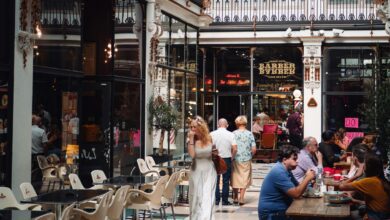Hyper-localisation: Creating a sense of place in the hospitality industry
By Ako Ardalan, CEO and founder of Unalome Interiors

Register to get 1 free article
Reveal the article below by registering for our email newsletter.
Want unlimited access? View Plans
Already have an account? Sign in
Bid farewell to the era of generic hospitality design – customers are craving more than a one-size-fits-all experience when they step into a bar or restaurant. In their quest for unique and personalised experiences, patrons demand curated designs that reflect the essence of their chosen destination. Enter the captivating trend of hyper-localisation, which has taken the industry by storm. Not only does hyper-localised design cater to the individual preferences of customers, but it also proves to be a cost-effective and ethically sustainable approach. By seamlessly integrating the local environment into design choices, from embracing historical elements to capturing the essence of the geological landscape, hyper-local design transports guests to a world that truly embodies a sense of place.
These simple design tips will make sure from the moment customers enter, they are enthralled by an environment that is tailored to their tastes, preferences, and the local culture. Hyper-localised design is fast becoming the key that unlocks the door to unforgettable hospitality experiences, so make sure you are on board.
Showcase native materials
In the world of bars and restaurants, building meaningful links to the local community can transform your establishment into a welcoming home away from home. By designing in harmony with the local surroundings, you can create an environment that feels transportable, where guests feel instantly at ease.
One way to shape this inviting atmosphere is by seamlessly blending the exterior with the interior. In mountainous regions, incorporating natural stone elements into your design can evoke a strong sense of place. The rugged beauty of the stones brings a touch of the outdoors inside, creating a cosy and authentic ambience. On the other hand, in tropical destinations, embracing biophilic design principles allows guests to feel intimately connected with the lush surroundings. Think about organic or locally significant textures.
But it doesn’t stop there. Incorporating elements that reflect the local culture goes beyond mere surface-level decorations. It requires thoughtful integration of design elements, colours, materials, and textures that pay homage to the unique heritage of the community. Let history be your guide—integrate historical artefacts as focal points, infuse textiles and furnishings with traditional patterns, or adorn your walls with local artwork or crafts. Each carefully chosen element weaves a narrative and creates a heartfelt connection between the space and the people it serves.
Reflect local culture and art
Commission local artists to create custom artworks, murals, or graphics that reflect the local culture and add visual interest to the space. This is also a great ethical way to support the local people and small businesses. Many establishments fall into the trap of incorporating dull, repetitive patterns with little thought especially when working with a large and expansive wall. Instead, enlist a breathtaking bespoke mural. This extraordinary feature, stretching from floor to ceiling, can transform the entire ambience of the space. As the mural takes shape, it becomes a canvas that tells a story, evokes emotions, and sparks conversations – something customers are sure to remember.
Elevating sustainability through hyper-local design
When it comes to hyper-local design, sustainability is not just a trend but a core principle. Embracing hyper-local design allows you to align with the growing sustainability movement in the hospitality industry. Customers today are increasingly conscious of the environmental impact of their choices and seek venues that share their values. For example, incorporating reclaimed wood or repurposing materials can give your space a unique character while minimising waste.
Additionally, consider the longevity and durability of your design choices. Opt for quality craftsmanship that ensures your furniture and fixtures have a longer lifespan, reducing the need for frequent replacements. This not only saves resources but also contributes to cost-effectiveness in the long run.
The Recipe for Success
Finally, remember to look beyond design elements. Locally sourced ingredients or immersive culinary experiences are also crucial elements for this trend. These features equal returning customers, as you offer an experience that you cannot find just anywhere. By offering these unique food and drink experiences, you not only cater to tourists seeking an authentic taste of the locale but also attract “locavore” eaters—those who are passionate about consuming locally sourced foods. These discerning individuals are actively seeking out establishments like yours that champion the local culinary scene.
Overall hyper-localised design is about telling the story of your establishment’s destination. Whether this involves incorporating historical references, cultural symbols, or even personal stories of the community, remember to do your research in order to begin translating the essence of the community into your creative choices.







